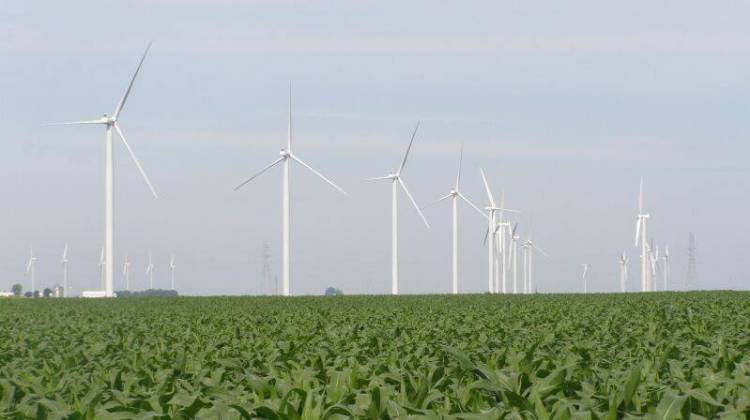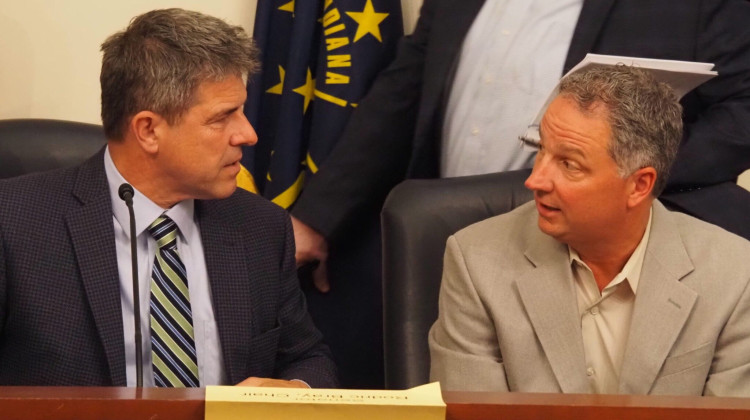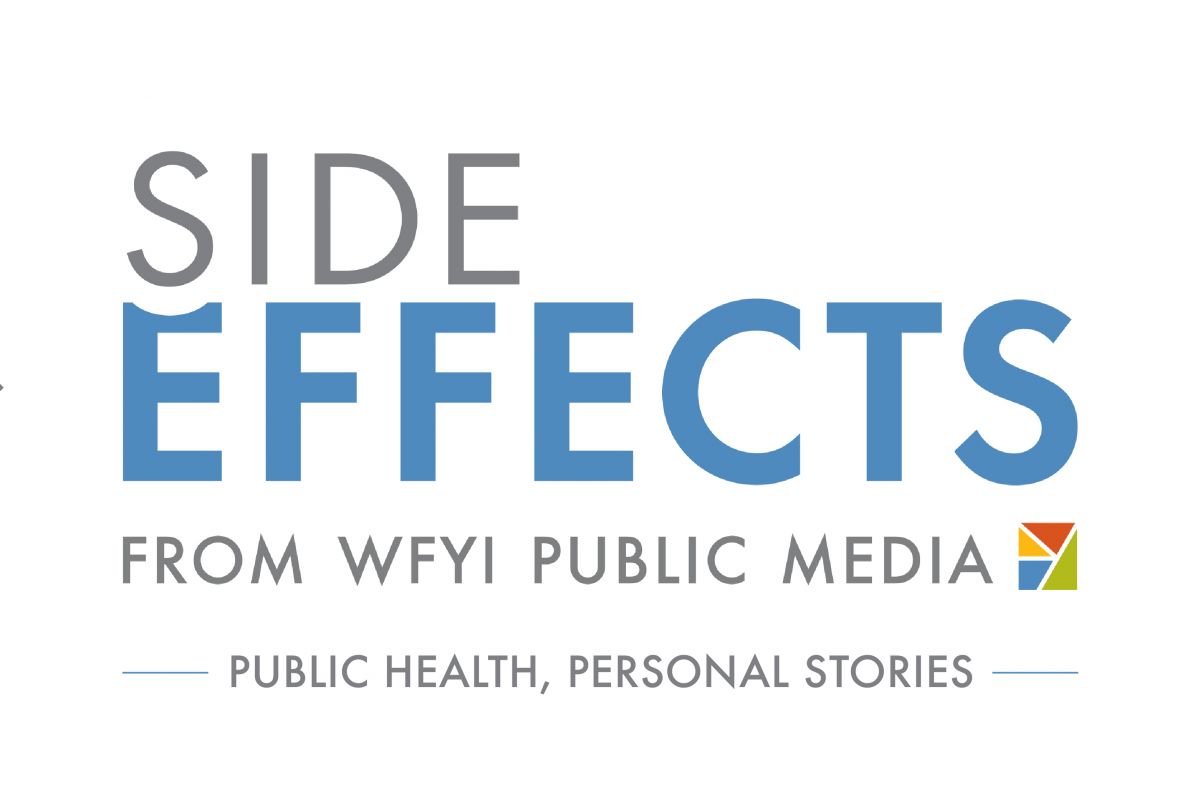
Several Indiana counties are rewriting ordinances that regulate wind turbines, like these in Benton County.
file photoIndiana is a promising state for developing wind energy, offering financial opportunities in rural areas. But county regulators can often feel caught in the middle, trying to balance economic development with individual property rights.
Four years after her neighbors put up wind turbines on their property, Brenda Kelich still isn’t used to them.
“I just don’t see how they’re worth it,” she says.
Five or six turbines surround her home in Madison County. Only one is going this summer day, which makes her laugh.
“I figured the day you showed up it wouldn’t be windy,” Kelich says.
Kelich says they’re usually much noisier, especially in the fall and spring.
“Sometimes the wind dies down in the evening or at night, but then when it don’t, I mean, you know, it’s so quiet out here and then all you can hear is those things,” she says.
Loudness isn’t Kelich’s only complaint. She says the turbines are an eyesore and they cause the sunlight to flicker into her window, like a strobe light. She says she’s also had more headaches since they’ve gone up. But her biggest problem isn’t actually with the turbines themselves.
“We didn’t get no input. I mean, we knew absolutely nothing about them: how big they were going to be, what they were going to look like, because we don’t know anybody that has any,” she says.
Kelich isn’t alone. Several Indiana counties are rewriting their wind ordinances. Some Henry and Fayette residents are opposing wind projects under consideration there, and Rush County just voted one project down. Still, the state ranks 12th in the nation for the amount of wind energy currently being generated.
“Indiana has an opportunity that many states don’t, whereby they can harvest the resource,” says Lael Eason. He’s a development manager with E.ON, a company that builds and operates wind farms in Indiana. He works with counties and residents to set up big wind projects.
Companies like E.ON do look at a county’s planning and zoning ordinances — rules like how close a turbine can be to neighboring property. But when it comes to getting a wind development approved, Eason says the most important thing is that the county officials look at the facts.
“Base it on fact and have that process whereby they’re looking at scientific, peer reviewed, academic studies, and, to the extent we can, separate from that emotion or misinformation,” he says.
If you’ve never been to a county meeting about wind farms, they can get heated. But emotional or not, the fact remains that some people — like Kelich — do not like living underneath wind turbines, especially when they don’t see a direct benefit. But Eason sees it differently.
“You know, there’s direct benefits, there’s indirect benefits, there’s induced benefits. Wind farms are built over the span of months, and they’re going to remain in these communities for years to come,” Eason says. “It’s a long term partnership and there’s a long term revenue that’s being created by this opportunity.”
Economic development versus property rights — that’s the tightrope Clinton County Area Planning Commissioner Mark Mills is walking. Clinton County is rewriting its wind ordinance. Mills says he is trying to write one based in fact.
“We’ve always tried to have a science-based ordinance, there’s a lot of math and science in our ordinance as far as the noise setback, because our setback is based on how much noise it actually generates at the house,” he says.
More than anything, Mills just wants to write an ordinance that stands the test of time.
For inspiration, he might look to White County, because Building and Planning Director Joe Rogers says, “Our office doesn’t receive complaints relative to wind turbines.”
White County has a lot of wind — the second most in the state. Perhaps taking a page out of Eason’s book, Rogers says the county’s success is born from its evaluation process.
“There was a lot of outreach, a lot of community involvement, which pretty much backtracked into the ordinance,” Rogers says. “So the community was very accepting of the ordinance as written because they participated from the very beginning.”
Since 2009, White County’s gotten about $11 million from wind revenue. They’ve used it to supplement funding for schools, libraries, their industrial park.
Still, Brenda Kelich, in Madison county, isn’t convinced of the benefits — direct, indirect, or otherwise. She doesn’t see any of the $5,000 a year, on average, wind developers pay property owners to lease land for wind farms.
“If I have to put up with them, then why can’t I have free electricity?" Kelich says. "You know, if everyone else is getting paid for them to be on their property, pay my electric bill every month, I’ll be happy. Maybe.”
 DONATE
DONATE







 Support WFYI. We can't do it without you.
Support WFYI. We can't do it without you.